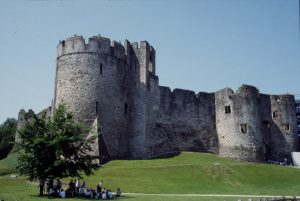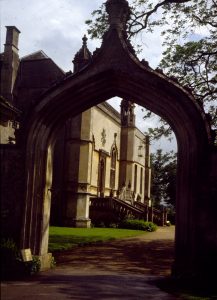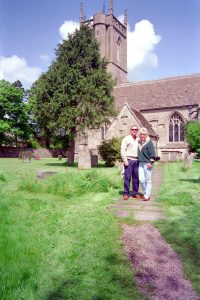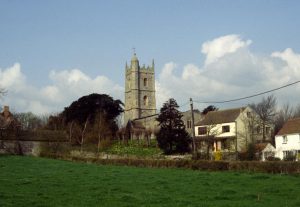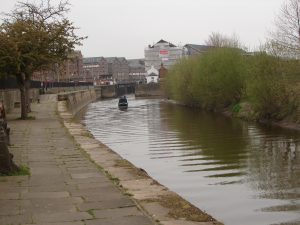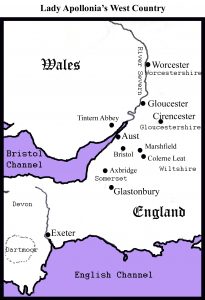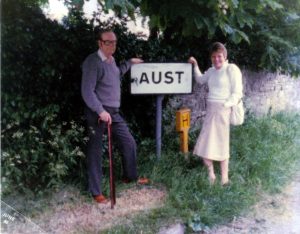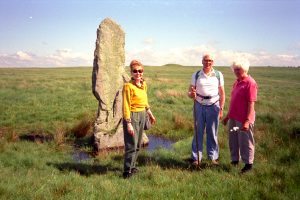 In my first book in the Lady Apollonia West Country Mysteries, Effigy of the Cloven Hoof, my heroine, Lady Apollonia, journeys from her home village of Aust to visit Cliffbarton, a fictitious village in the Exmoor region of Somerset. Exmoor is a sparsely populated, hilly moorland in western Somerset and northern Devon and includes 34 miles of coastline along the Bristol Channel. It takes its name from the River Exe whose source is in the centre of Exmoor before it flows south to reach the English Channel. The area of Exmoor became a national park in 1954.
In my first book in the Lady Apollonia West Country Mysteries, Effigy of the Cloven Hoof, my heroine, Lady Apollonia, journeys from her home village of Aust to visit Cliffbarton, a fictitious village in the Exmoor region of Somerset. Exmoor is a sparsely populated, hilly moorland in western Somerset and northern Devon and includes 34 miles of coastline along the Bristol Channel. It takes its name from the River Exe whose source is in the centre of Exmoor before it flows south to reach the English Channel. The area of Exmoor became a national park in 1954.
Along the coast of Exmoor by Porlock Bay, I created the fictional village of Cliffbarton which Lady Apollonia visits with her maid, Nan, in the first book. Dunster is a real village on the eastern edge of Exmoor where my heroine stayed overnight on her way to Cliffbarton and on her return. There is an Old Nunnery built in Dunster by Cleeve Abbey in 1346 with the intention of housing nuns. Although it never served this purpose, I have used the idea of the nunnery as a place where the Lady Apollonia and her maid could find accommodation for the night. The ancient castle on the hill or tor from which Dunster takes its name dominates the town. It overlooks the High Street and the Wool Market, an important part of the economy of Dunster for many centuries.
Exmoor shows signs of human habitation from the Mesolithic or Middle Stone Age onward. The Tarr Steps on Exmoor is a clapper bridge, made up of horizontal slabs of stone, dating from about 1000 bce. One can also find standing stones and prehistoric burial sites on Exmoor. The photo above shows me standing in 1993 with two English friends near a vertical stone called the Longstone in Exmoor.
Just a few miles from fictional Cliffbarton are two more ancient sites on Exmoor which I have visited with my husband. One is a Saxon church at Culbone called Saint Beuno’s, although its porch is 13th century. It is thought to be the smallest parish church in England. Another ancient site is the village of Selworthy which is mentioned in the Domesday Book in the 11th century. The contemporary village of Selworthy is the perfectly charming Somerset village, full of flowers and picturesque thatched roofed cottages. 
Our travels have taken us to the source of the River Exe near Simonsbath. Although this is near to the Bristol Channel, the river flows into Devon where it passes through the town of Tiverton and the city of Exeter, eventually flowing into the English Channel at Exmouth. Other rivers flow out of Exmoor into the Bristol Channel such as the East and West Lyn which meet at Lynmouth.
For more information on Exmoor, click on
https://en.wikipedia.org/wiki/Exmoor .
